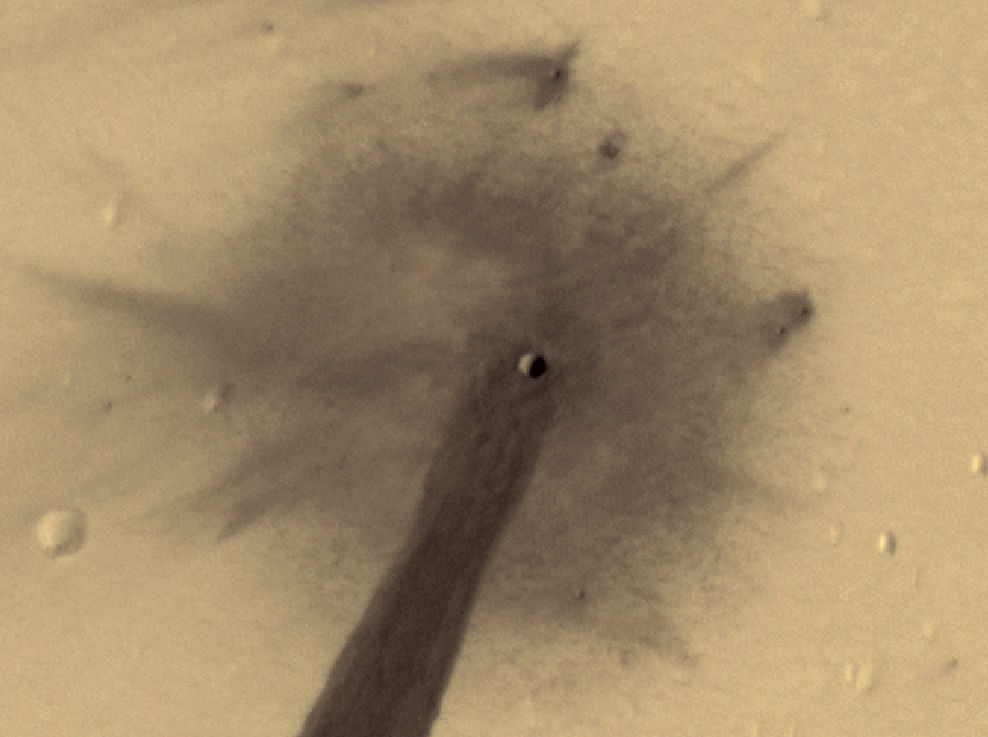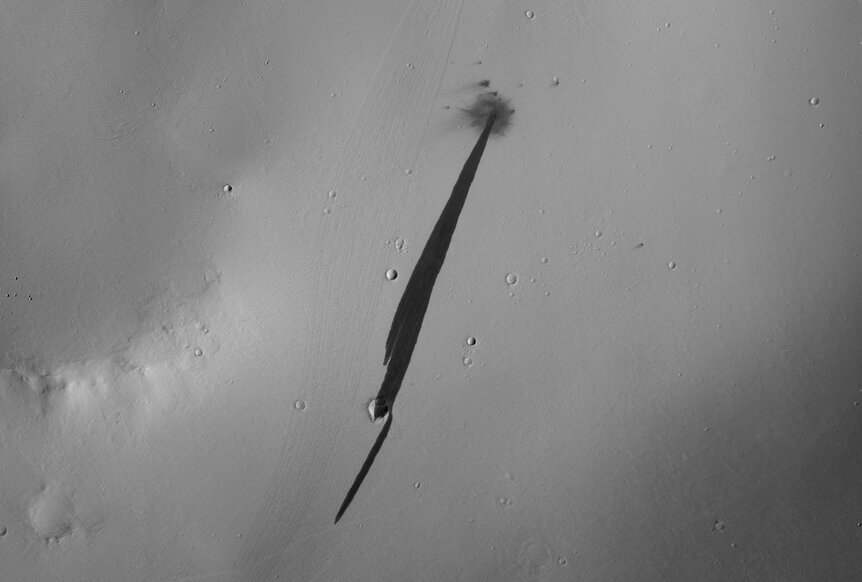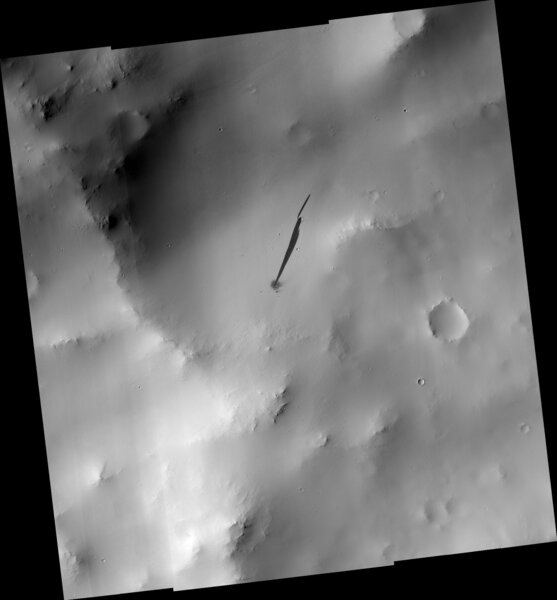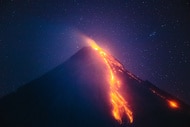Create a free profile to get unlimited access to exclusive videos, sweepstakes, and more!
An asteroid impact triggered an avalanche on Mars!

Every now and again I get to write a sentence that truly, deeply, makes me giddy.
To wit:
Sometime within the past ten years or so, a tiny asteroid impacted Mars and triggered a dust avalanche that left a dark streak a kilometer long on the surface of the planet.
Oh yeah.
There’s a lot of cool here, so let me explain.
A large part of Mars is covered in dust (especially when, say, there’s a planet-wide dust storm raging across the fourth world from the Sun). This dust is very fine grained and is high in iron, so it’s a reddish ochre in color. It’s literally rusty!
Much of the surface material on Mars is volcanic in origin and basaltic, which makes it a very dark gray. However, in some regions this dark floor is covered in brighter dust, and we only see the darker stuff when the wind blows the dust around… or a different event disturbs it.
Like, say, an asteroid impact! Sometime within the past decade, an asteroid probably under a half-meter wide slammed into the surface of Mars at high speed. The impact occurred in the southwest part of the vast Arabia Terra, an ancient tract of volcanic uplands near the Martian equator. This particular spot is steeply sloped, and covered with a thin layer of that fine dust.
The impact carved a crater about 5 meters across (the size of a big living room, say), and sent up a plume of excavated basalt that collapsed into a skirt immediately around the crater. Bigger chunks flew up and came back down, making secondary impacts around the main crater too. All this is visible, I’ll note, thanks to the keen eye of the fantabulous HiRISE camera on the Mars Reconnaissance Orbiter.
But the force of that asteroid impact also created an explosion — the energy of motion of the asteroid was quite high, so when it was suddenly stopped by the ground that energy was converted instantly into light and heat and shook the ground pretty hard. This disturbed that layer of dust, causing it to flow down the steep hill. The cascade of lighter-colored material left behind the exposed darker basalt and created a streak about a kilometer long downhill of the impact site.
You can see the way the dust flow spread as it moved downhill, making the streak wider. You can also see some features in the exposed surface, like long ridges and some small craters; the flow was actually rather gentle despite its violent origins. I love how it swept into a larger 60-meter wide crater downhill, clearing it of some dust, too, and also flowed a bit around it!
To the left of the dark streak is a lighter, wider streak, that may be evidence of an older, wider avalanche, now also covered in dust like the rest of the area. Interestingly, there’s a dark spot to the right and below the main impact site, about 500 or 600 meters way, and it looks a lot like the secondary impacts around the main crater. I don’t see any others like it, so it seems unlikely that it too is from a piece of material kicked up by the impact; I’d expect to see more at that distance. Maybe the asteroid had a smaller piece break off as it passed through the thin air of Mars, and that piece hit farther away. Perhaps it’s entirely unrelated. I’m simply guessing here.
These dark streaks are common across Mars, and some obviously form from impact disturbances (including air bursts, where the incoming rock disintegrates before it hits the ground and creates an explosion above the surface, not on it), but the origin stories of others aren’t so clear. They might be caused by carbon dioxide ice mixed in with or under the dust that warms and turns into a gas, dislodging the material and causing it to flow. Some scientists think some may be due to water ice melting under the surface, too.
There may be many causes of different streaks on Mars, but this one is clearly impact induced. What an amazing thing to see! Mars is cold, dry, and nearly airless, but that doesn’t mean it’s a barren rock. Things change there, both slowly and rapidly, and sometimes what’s left behind is beautiful. And truly amazing.

















